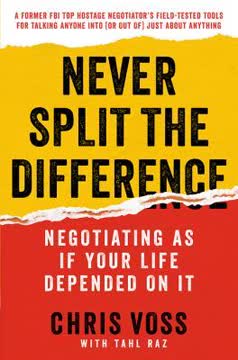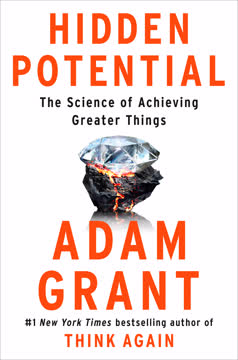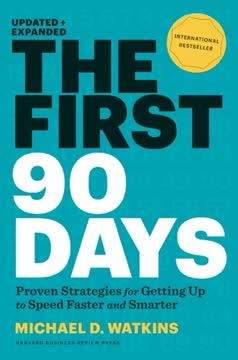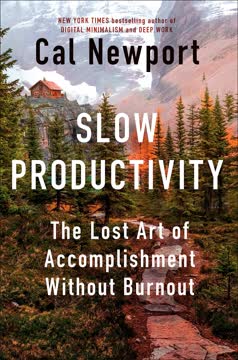Key Takeaways
1. Embrace a growth mindset to coach effectively
"Low expectations rarely yield growth and often lead to frustration on both sides."
Shift your thinking. As a coach, adopt a growth mindset that assumes your employees can learn and develop. This mindset is crucial for effective coaching, as it sets the foundation for improvement and allows you to see potential where others might see limitations.
Recognize and overcome biases. Be aware of your own preferences and biases that may hinder your ability to coach effectively. Use frustration as a guide to identify these biases, and seek feedback from trusted colleagues to gain a more objective perspective.
Connect skills to big-picture needs. Help your employees understand how their development aligns with organizational goals. This approach gives them a sense of purpose and motivation to grow. Ask questions to understand their strengths, interests, and struggles, then frame your coaching in a way that connects their personal growth to the company's objectives.
2. Set the stage for peak performance through proper task selection
"The intersection of those three elements creates the magical field in which consistent excellence can happen."
Select the right tasks. Help employees achieve peak performance by selecting tasks that:
- They are good at
- They like to do
- Add value to the project or organization
Create a supportive environment. Foster connections between employees, their tasks, and the organization's mission. This sense of connection boosts loyalty, excitement, and willingness to contribute.
Promote positive connections. Encourage employees to:
- Feel "known" as individuals
- Respond to bids for attention from colleagues
- Express appreciation regularly
3. Build trust through active listening and transparent behavior
"Without trust, employees won't level with you; at best, you'll learn either untruths or partial truths about how they see themselves and their roles within the organization."
Prioritize trust-building. Make establishing trust your top priority as a leader. Without it, employees won't be honest about their goals, weaknesses, or desired growth areas.
Practice active listening. Use the following tactics:
- Pay full attention and maintain comfortable eye contact
- Notice nonverbal cues
- Affirm what you hear
- Reflect emotions without agreeing or disagreeing
- Paraphrase to check understanding
- Summarize key themes
Be transparent in your actions. Model the behavior you expect from your employees. Be open about tough decisions and feedback, providing clear explanations and being receptive to questions.
4. Structure coaching sessions for maximum impact
"Coaching sessions are conversations between you and your employee in which you identify areas for growth, create development plans, perform exercises, and check in on progress."
Agree on outcomes. Start each coaching session by defining clear goals and expectations. Encourage your employee to take part in setting the agenda and identifying what they hope to achieve.
Build baseline understanding. Resist the urge to immediately offer solutions. Instead, ask open-ended questions to gather information and understand the employee's perspective.
Hold up the mirror and reframe. Offer reflections on what you've heard, help the employee see the situation from different angles, and practice or role-play new skills or mindsets.
Ensure actionable close. End each session by having the employee articulate what they've learned and their action items. Agree on follow-up steps and timing.
5. Provide feedback that sticks by avoiding threat responses
"When people are in the grip of a threat response, they're less capable of absorbing and applying feedback."
Cultivate relationships. Build connections with employees over time to reduce the likelihood of triggering a threat response during feedback conversations.
Manage emotions. Express just enough emotion to engage the other person without provoking a hostile or defensive reaction. The right amount depends on the issue, relationship, and context.
Play fair. Focus feedback on your feelings about the behavior, avoiding references to the other person's motives. This approach, known as "staying on your side of the net," reduces the risk of inaccurate assumptions that can provoke defensiveness.
Set the stage. Pay attention to logistical details like timing, duration, physical location, and proximity to create an environment conducive to productive feedback conversations.
6. Tailor coaching to individual learning styles and performance levels
"By tapping into their preferred styles, you will engage them more deeply and motivate them. As a result, they'll make greater—and faster—progress toward their goals."
Identify learning styles. Recognize the nine learning styles:
- Initiating
- Experiencing
- Imagining
- Reflecting
- Analyzing
- Thinking
- Deciding
- Acting
- Balancing
Adapt your approach. Tailor your coaching methods to match each employee's preferred learning style. This customization increases engagement and motivation, leading to faster progress.
Coach different performance levels. Adjust your coaching strategy based on whether an employee is a:
- Star (A player): Devote more time to them, provide genuine praise, and hold them accountable for collegiality
- Steady (B player): Accept them for who they are, recognize their contributions, and provide growth opportunities within their comfort zone
- Struggler (C player): Create a clear improvement plan, give candid real-time feedback, and provide a support network
7. Coach rookie managers to develop emotional maturity
"Putting these unseasoned managers into positions of authority too quickly robs them of the opportunity to develop the emotional competencies that come with time and experience."
Recognize the importance of emotional maturity. Understand that as managers rise in the ranks, soft leadership skills become increasingly crucial for success.
Implement development strategies:
- Deepen 360-degree feedback
- Interrupt the ascent (assign cross-functional roles)
- Act on your commitment to development
- Institutionalize personal development
- Cultivate informal networks (e.g., mentoring)
Be patient and persistent. Developing emotional competencies requires time, practice, and ongoing personal interactions. Resist the temptation to promote promising managers prematurely.
8. Foster self-coaching skills in your employees
"You can be a more effective leader and manager by helping your employees coach themselves."
Promote a growth mindset. Encourage employees to view themselves as works in progress, open to learning and change. Focus feedback on efforts to accomplish goals, not on inherent abilities.
Ask before you advise. When employees seek support, start by asking questions rather than immediately providing answers. This approach helps them tap into their own knowledge and expertise.
Be transparent about coaching techniques. Explain the methods you're using and why, helping employees understand and replicate the process in their own self-coaching efforts.
Encourage informal networks. Support employees in developing relationships outside the company hierarchy, such as through mentoring programs or peer groups, to further their emotional development.
9. Leverage team coaching to minimize process losses and maximize gains
"Coaching is about building teamwork, not about doing the team's work."
Focus on key performance processes. Address three aspects of group interaction that shape team effectiveness:
- Effort applied to collective work
- Appropriateness of performance strategies
- Level of knowledge and skill applied to the work
Time interventions strategically. Provide different types of coaching at specific points in a team's life cycle:
- Beginnings: Motivational coaching to build engagement
- Midpoints: Consultative coaching to reflect on and improve performance strategies
- Endings: Educational coaching to help members learn from their experiences
Adapt coaching to team needs. Be flexible in your approach, recognizing that different teams may require different types of interventions at various stages of their work.
Last updated:
FAQ
What is "HBR Guide to Coaching Employees" by Harvard Business Review about?
- Comprehensive coaching manual: The book is a practical guide for managers who want to develop their coaching skills to help employees grow, improve performance, and align with organizational goals.
- Focus on actionable advice: It provides step-by-step methods, real-world examples, and tools for holding effective coaching sessions, giving feedback, and fostering employee independence.
- Covers a range of scenarios: The guide addresses coaching for high performers, steady contributors, underperformers, rookie managers, and teams, making it relevant for diverse workplace situations.
- Emphasizes modern leadership: It advocates for a shift from traditional command-and-control management to a coaching-oriented, empowering leadership style.
Why should I read "HBR Guide to Coaching Employees" by Harvard Business Review?
- Boosts managerial effectiveness: The book demonstrates how coaching can increase productivity, creativity, and employee engagement, ultimately benefiting both managers and organizations.
- Addresses common challenges: It helps managers overcome obstacles like lack of time, reluctance to delegate, and difficulty giving feedback.
- Evidence-based strategies: The guide draws on research, expert insights, and proven frameworks, ensuring readers get reliable and practical advice.
- Applicable to all levels: Whether you’re a new manager or a seasoned leader, the book offers relevant strategies for coaching direct reports, peers, and teams.
What are the key takeaways from "HBR Guide to Coaching Employees"?
- Coaching is essential leadership: Effective managers must coach to empower employees, foster independence, and drive organizational success.
- Ask, don’t tell: The core of coaching is asking questions that help employees find their own solutions, rather than simply providing answers.
- Growth mindset matters: Adopting and encouraging a growth mindset in yourself and your team is crucial for development and resilience.
- Tailor your approach: Customizing coaching to individual learning styles, roles, and performance levels leads to better outcomes.
How does "HBR Guide to Coaching Employees" define coaching, and how is it different from traditional management?
- Coaching as inquiry: Coaching is defined as “asking questions that help people discover the answers that are right for them,” focusing on employee-driven solutions.
- Contrast with command-and-control: Unlike traditional management, which relies on giving orders and providing answers, coaching emphasizes empowerment and development.
- Role of the manager: Managers act as facilitators and supporters, helping employees grow rather than micromanaging their work.
- Long-term benefits: Coaching builds skills, confidence, and independence, reducing the need for constant managerial intervention.
What are the main steps or methods for effective coaching sessions in "HBR Guide to Coaching Employees"?
- Set clear outcomes: Begin each session by agreeing on specific goals and what both parties hope to achieve.
- Build understanding: Ask open-ended questions to understand the employee’s perspective, challenges, and development needs.
- Reflect and reframe: Hold up a mirror to the employee’s thinking, offer new perspectives, and practice new skills together.
- Ensure actionable closure: End with a summary of key takeaways and agreed-upon action items, and schedule follow-up to maintain momentum.
How does "HBR Guide to Coaching Employees" recommend giving feedback that sticks?
- Cultivate strong relationships: Build trust and rapport over time so feedback is received constructively.
- Manage emotions: Deliver feedback with the right balance of emotion—enough to show you care, but not so much that it triggers defensiveness.
- Focus on behavior, not motives: Stay on your side of the net by describing the impact of actions rather than speculating about intent.
- Be specific and timely: Give feedback regularly, in small doses, and in a setting that minimizes stress and maximizes openness.
What are the most common coaching mistakes according to "HBR Guide to Coaching Employees," and how can managers avoid them?
- Coaching the “Mini-Me”: Avoid trying to mold employees in your own image; focus on their unique strengths and goals.
- Waiting for special moments: Don’t reserve coaching for formal sessions—integrate it into daily interactions and real-time feedback.
- Losing patience: Recognize that coaching is a long-term process; set milestones and celebrate incremental progress.
- Assuming everyone is coachable: Assess willingness and ability to be coached, and adjust your approach or expectations accordingly.
How does "HBR Guide to Coaching Employees" suggest managers tailor coaching to different employee types (stars, steadies, strugglers)?
- Stars (A players): Invest more coaching time, provide genuine praise, help manage their pace, and encourage teamwork.
- Steadies (B players): Accept their strengths, recognize and reward their contributions, and offer growth opportunities within their comfort zones.
- Strugglers (C players): Set clear improvement plans, give candid feedback, provide support, but be prepared to make tough decisions if progress stalls.
- Unequal time investment: The book emphasizes that not all employees should receive equal coaching time—focus where it will have the most impact.
What role does mindset play in coaching, according to "HBR Guide to Coaching Employees"?
- Growth vs. fixed mindset: Managers must adopt a growth mindset, believing that employees can develop with effort and support.
- Modeling mindset: By demonstrating a willingness to learn and improve, managers encourage the same attitude in their teams.
- Feedback focus: Praise effort and persistence rather than innate ability to foster resilience and openness to learning.
- Learning from setbacks: Treat failures as opportunities for growth, both for yourself and your employees.
How does "HBR Guide to Coaching Employees" address coaching for different learning styles?
- Nine learning styles: The book identifies styles such as Initiating, Experiencing, Imagining, Reflecting, Analyzing, Thinking, Deciding, Acting, and Balancing.
- Observation and dialogue: Managers are encouraged to observe employees’ preferences and ask about their favored ways of learning.
- Tailored tactics: Adjust coaching methods—some employees need hands-on practice, others prefer reflection or analysis.
- Encourage flexibility: While leveraging preferred styles, also help employees develop new learning approaches to meet diverse challenges.
What advice does "HBR Guide to Coaching Employees" give for coaching rookie managers and rising leaders?
- Clarify new roles: Help rookie managers understand the shift from individual contributor to team enabler.
- Support delegation: Address fears around losing control or status, and teach effective delegation and follow-up.
- Promote emotional maturity: For rising leaders, focus on developing self-awareness, empathy, and relationship-building skills.
- Use feedback and mentoring: Provide regular, honest feedback and encourage participation in mentoring or cross-functional assignments.
What are the best quotes from "HBR Guide to Coaching Employees" and what do they mean?
- “Effective leadership looks a lot like coaching.” This highlights the book’s central thesis that modern leadership is about empowering others, not just directing them.
- “Ask more than you tell—aim for a ratio of about 4:1.” Emphasizes the importance of inquiry over instruction in coaching conversations.
- “A growth mind-set can feel risky because it forces you, the coach, to develop skills of your own that go beyond subject-matter expertise.” Reminds managers that coaching is a learning journey for both parties.
- “You do not need to wait for a special time to coach, and not every coaching conversation needs to be a big development discussion with a capital D.” Encourages integrating coaching into everyday work, making it practical and sustainable.
Review Summary
HBR Guide to Coaching Employees receives mixed reviews, with an overall rating of 3.88 out of 5. Readers appreciate its concise format, practical advice, and insights on effective coaching techniques. Key takeaways include focusing on effort over skill, turning dead time into development opportunities, and the importance of proper communication. Some readers find it informative and eye-opening, while others criticize its academic tone and lack of revolutionary content. The book is praised for its accessibility and usefulness for executives and new managers, though some feel it doesn't meet expectations for in-depth coaching guidance.
Similar Books










Download PDF
Download EPUB
.epub digital book format is ideal for reading ebooks on phones, tablets, and e-readers.














